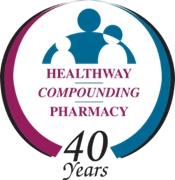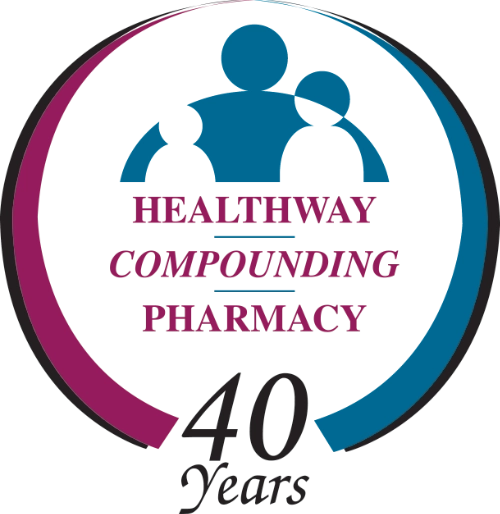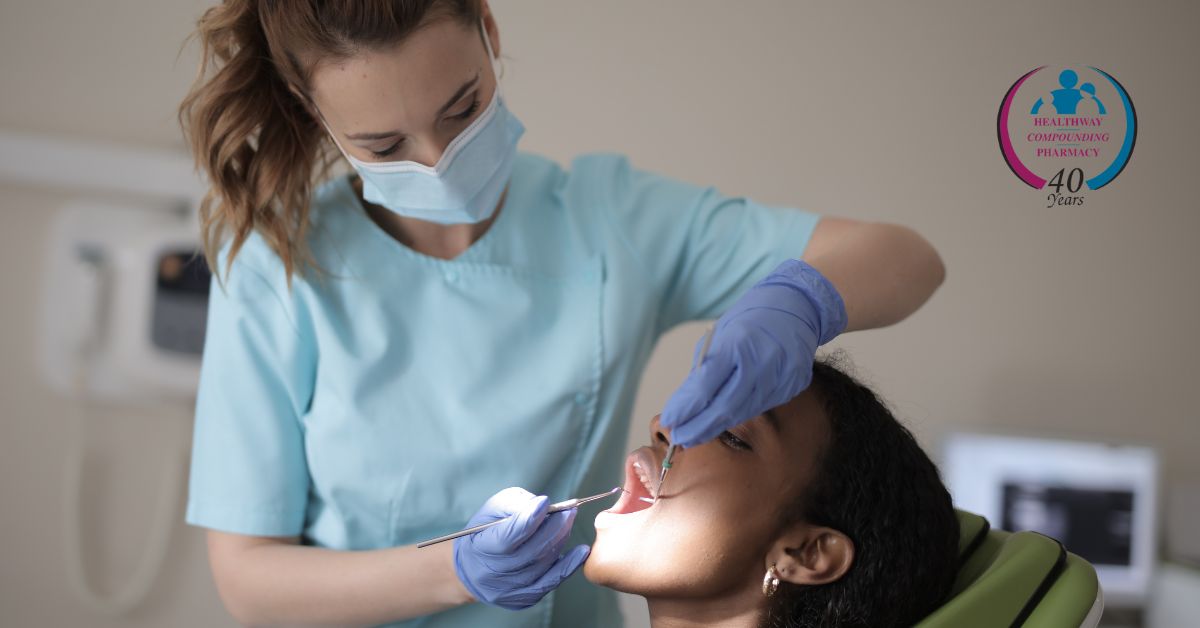The Problem: Limitations of Commercial Dental Medications
Dental pain, oral infections, and post-procedural discomfort are common issues that affect millions of patients each year. According to the Centers for Disease Control and Prevention (CDC), nearly 50% of adults in the U.S. experience some form of periodontal disease, while the American Association of Oral and Maxillofacial Surgeons (AAOMS) reports that about 5 million wisdom teeth extractions occur annually.
Many patients suffer from conditions like pain during procedures, oral mucositis, burning mouth syndrome, or severe post-surgical pain, necessitating a targeted approach.
Unfortunately, commercially available medications for dental applications have several shortcomings:
- One-size-fits-all formulations that may not address individual sensitivities or specific conditions.
- Systemic side effects from oral pain medications, leading to gastrointestinal distress, drowsiness, or potential addiction risks (opioids).
- Limited efficacy in localized pain management and infection control due to lack of customized dosing and delivery methods.
- Allergic reactions or intolerances to inactive ingredients in mass-produced products.
Worth considering: Sometimes, a medication that has been helpful for patients is discontinued. Our pharmacists are able to compound and essentially recreate discontinued medications to avoid disruption in patient therapies.
Innovation: Custom Compounded Medications
Compounded medications offer a tailored approach by addressing the unique needs of patients and healthcare practitioners. As a PCAB-accredited compounding pharmacy, Healthway Compounding Pharmacy in Saginaw, Michigan, specializes in formulating personalized medicated mouthwashes, topical pain relievers, and other medications that allow dental professionals the ability to provide their patients with an elevated experience.
These medications may provide:
- Enhanced local delivery of anesthetics, analgesics, and antimicrobial agents.
- Customizable strengths and ingredients to match patient requirements.
- Minimized systemic absorption, reducing the risk of side effects.
- Alternative bases for patients with allergies to preservatives, dyes, or flavoring agents.
- Combination therapies that may improve outcomes by addressing multiple symptoms at once.
Top Compounded Medications for Dental Applications
Pain Formulations for TMJ and Dental Discomfort
TMJ Formulation Lotion
Common Prescribers: Dentists, Oral Surgeons, Pain Management Specialists
This topical pain relief lotion is specifically designed for patients suffering from temporomandibular joint (TMJ) disorder. It combines Potassium Salts Complex for muscle relaxation and Ketoprofen (NSAID) for inflammation reduction. This formulation may:
- Reduce jaw pain and inflammation associated with TMJ
- Provide localized relief with minimal systemic side effects
- Improve jaw mobility for patients experiencing stiffness or discomfort
- Offer non-opioid pain management without gastrointestinal issues

Cyclobenzaprine + Ketoprofen Cream
Common Prescribers: Dentists, Oral Surgeons, Pain Management Specialists
This dual-action pain-relief cream is used for jaw muscle tension, TMJ disorder, and post-dental procedure discomfort. The combination of Cyclobenzaprine (muscle relaxant) and Ketoprofen (NSAID) may provide:
- Pain relief and inflammation control for jaw-related conditions
- Reduction in muscle spasms and tension in the jaw
- Targeted application to avoid systemic NSAID side effects
- Alternative to oral pain relievers, reducing risk of gastrointestinal distress
Options: Available in 60 ml/120 ml sizes.
Multi-Action Pain & Inflammation Cream (Amitriptyline / Baclofen / Cyclobenzaprine / Diclofenac / Lidocaine)
Common Prescribers: Dentists, Oral Surgeons, Pain Management Specialists
This topical pain management cream is a powerful blend of:
- Amitriptyline (nerve pain relief)
- Baclofen (muscle relaxant)
- Cyclobenzaprine (muscle relaxant)
- Diclofenac (NSAID for inflammation reduction)
- Lidocaine (local anesthetic for pain relief)
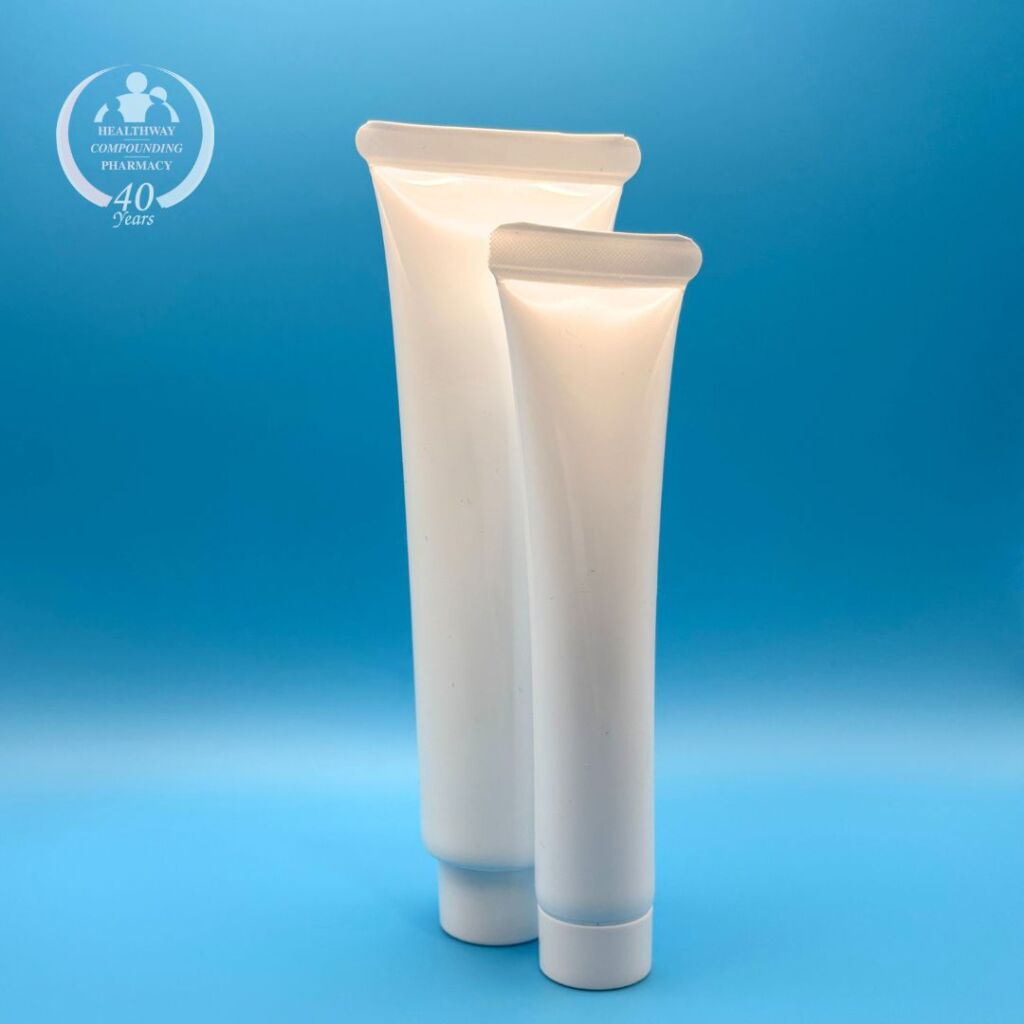
Prescribed for:
- TMJ pain, muscle tension, and post-procedure inflammation
- Localized action to avoid systemic medication side effects
- Multi-ingredient approach for comprehensive pain management
Burning Mouth Syndrome (BMS)
BMS Lozenge (Amitriptyline / Baclofen / Gabapentin)
Common Prescribers: Dentists, Neurologists, Pain Specialists
This oral lozenge is designed to relieve nerve pain associated with Burning Mouth Syndrome (BMS).
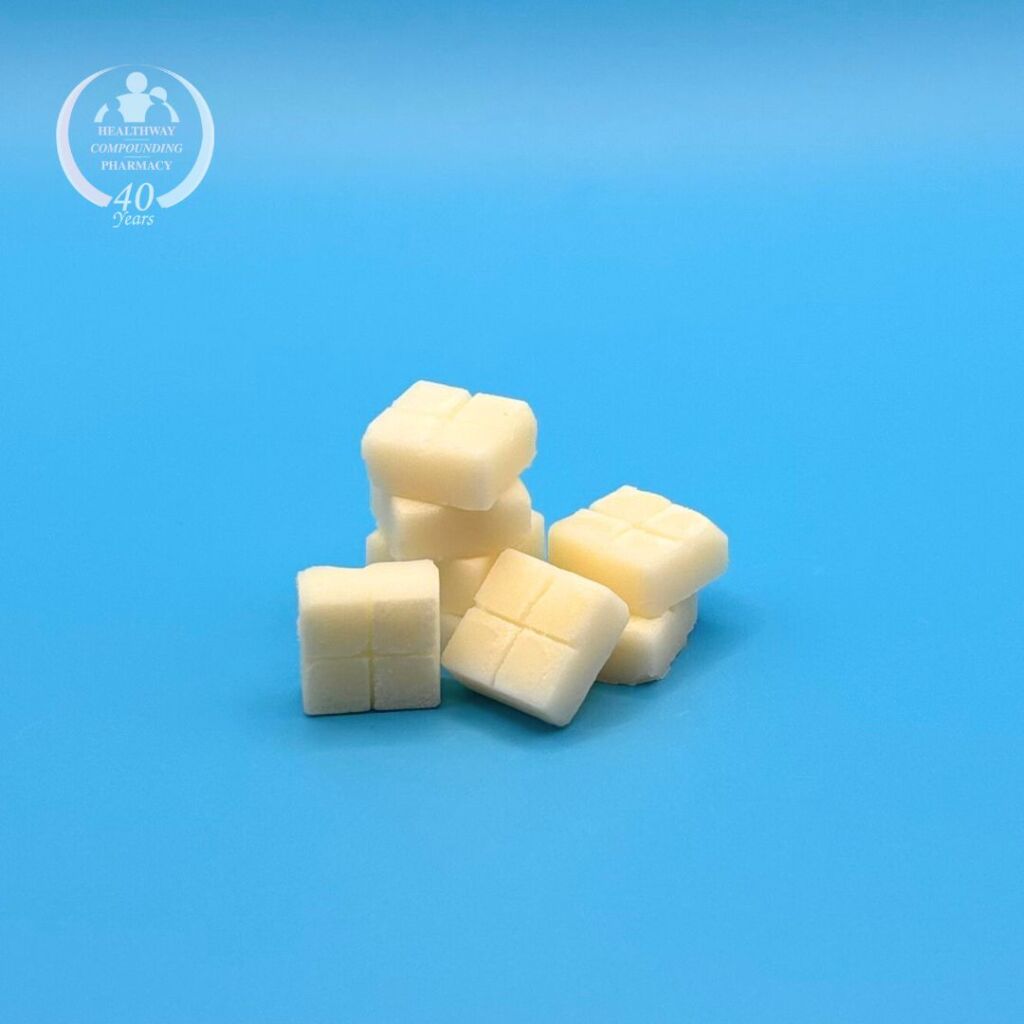
The combination of:
- Amitriptyline (tricyclic antidepressant for nerve pain relief)
- Baclofen (muscle relaxant to ease tension)
- Gabapentin (nerve pain modulator)
Prescribed for:
- Targeted relief without drowsiness or systemic side effects
- Non-opioid pain management for chronic oral discomfort
- A dissolvable troche format for easy administration
Also prescribed for BMS: Low Dose Naltrexone (LDN), Lipoic Acid Supreme capsules (Oral Alpha lipoic Acid).
Magic Mouthwash Oral Rinse (Nystatin / Doxycycline / Triamcinolone / Chlorpheniramine / Deoxy-D-Glucose)
Common Prescribers: Dentists, Periodontists, Oncologists
This customized oral rinse is designed to address oral mucositis, aphthous ulcers, and severe oral inflammation.
It contains a combination of:
- Nystatin (antifungal for infection control)
- Doxycycline (antibacterial to prevent secondary infections)
- Triamcinolone (steroid to reduce inflammation and pain)
- Chlorpheniramine (antihistamine to soothe irritation)
- Deoxy-D-Glucose (a healing agent for ulcers and lesions)
Prescribed for:
- Managing oral mucositis in cancer patients undergoing chemotherapy or radiation
- Reducing inflammation and pain in severe mouth ulcers
- Providing an easy-to-use, swishable format for localized approach
Note: Lidocaine may be added for extra pain relief. Pediatric formulations are available without doxycycline.
Ketamine Oral Rinse
Common Prescribers: Dentists, Pain Management Specialists, Oncologists
This compounded oral rinse provides powerful pain relief for patients suffering from severe oral pain, mucositis, and post-procedure discomfort. Ketamine, a well-known NMDA receptor antagonist, may help to:
- Reduce severe nerve pain associated with oral conditions
- Provide rapid relief when traditional pain medications are ineffective
- Lower reliance on opioid medications for pain management
Dosages: Available in 10 mg/5 ml/20 mg/5 ml formulations.
Topical Dental Anesthetic Gel (Tetracaine / Phenylephrine / Lidocaine)
Common Prescribers: Dentists, Pediatric Dentists, Oral Surgeons
This topical anesthetic gel is used before scaling, root planing, and injections to provide temporary numbing. We recommend a combination of drugs such as:
- Tetracaine (potent local anesthetic for deep numbing)
- Phenylephrine (vasoconstrictor to reduce bleeding and increase numbing duration)
- Lidocaine (fast-acting anesthetic for quick relief)
- Prilocaine (numbing and pain relief)
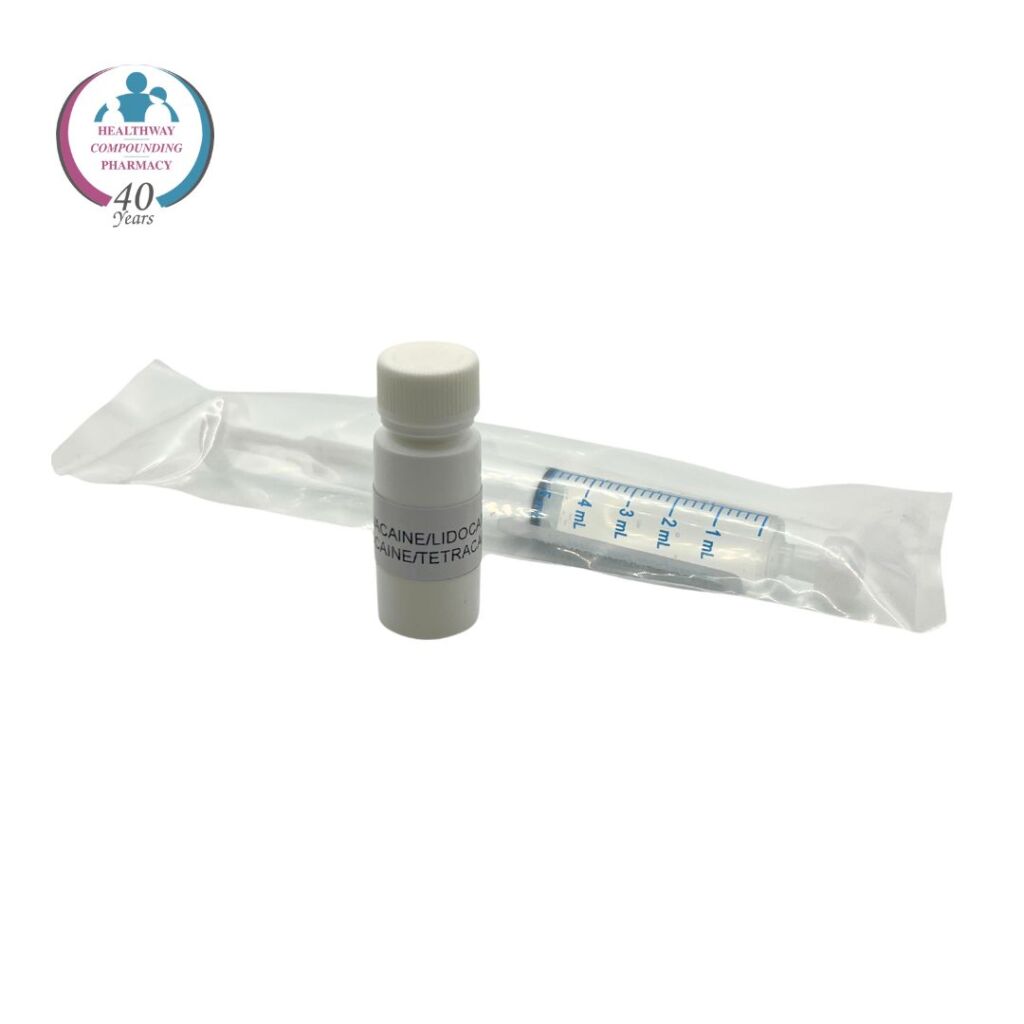
This formulation may:
- Prevent discomfort during dental procedures
- Provide a needle-free alternative for anxious patients
- Numbing with minimal systemic absorption
Options: Available in 5 ml/10 ml for controlled application.
Gag Reflex Management Troches
Common Prescribers: Dentists, Oral Surgeons
These electrolyte-based lozenges are formulated to reduce gag reflex sensitivity, making dental procedures easier for both patients and practitioners.
Additionally, Tetracaine Suckers (0.5%) are available in Grape, Green Apple, Orange, and Cherry flavors for a fast-acting numbing effect.

Artificial Saliva Spray (Xero Spray Mint Flavor)
Common Prescribers: Dentists, Periodontists
This moisturizing oral spray is designed to relieve dry mouth caused by medications, radiation therapy, or autoimmune conditions.
- Long-lasting moisture for improved comfort
- Preventative action to avoid dental decay by maintaining oral hydration
- Easy spray format for on-the-go use
These customized dental formulations from Healthway Compounding Pharmacy offer personalized solutions for oral pain, inflammation, and therapy support.
Dental Practitioners: Prescribe with Ease
Fill out and fax our easy to use prescription form for dental compounds.
FAX: 989-791-4603
Additional Potential Benefits of Compounded Dental Medications
- Multi-ingredient Formulations – Many patients require more than one active ingredient for potentially optimal relief. Compounded medications can combine anti-inflammatory, analgesic, and antimicrobial agents into a single medication.
- Custom Dosage Forms – Depending on patient preference and physician recommendations, compounded medications can be prepared as gels, rinses, sprays, or lozenges for enhanced ease of use.
- Reduced Dependency on Systemic Medications – By focusing on a localized approach, compounded topical and oral formulations may minimize the need for oral opioids and NSAIDs, which may have systemic risks.
- Flavored Medications for Compliance – Many pediatric and geriatric patients struggle with the taste of commercial medications. Flavored options improve compliance and overall satisfaction.
Why Choose a PCAB-Accredited Compounding Pharmacy?
Healthway Compounding Pharmacy is proud to be Michigan’s first PCAB-accredited compounding pharmacy, maintaining this distinction since 2007.
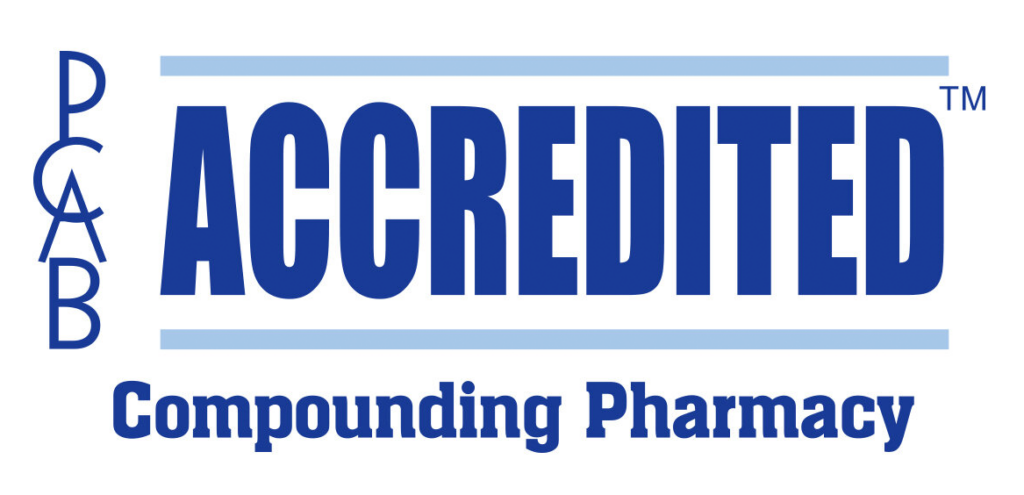
Our accreditation ensures:
- High-quality standards in formulation and sterility
- Personalized medications tailored to each patient
- Collaboration with healthcare providers to develop the best therapeutic solutions
- Strict adherence to safety protocols in compounding procedures
Take an Innovative Approach to Addressing Dental Pain and Oral Conditions
Whether you’re a Michigan dentist, oral surgeon, periodontist, or pain management specialist, partnering with a reputable compounding pharmacy like Healthway may be the answer you’re looking for to set yourself apart by significantly improving patient comfort and outcomes. Compounded medicated mouthwashes and topical pain medications, among others, offer a customized alternative to mass-produced dental therapies.
Shipping statewide throughout Michigan with a valid prescription.
References
Bassani, G., & Keim, D. (2004). Compounding for the dental patient: a focus on ulcers of the mouth. International Journal of Pharmaceutical Compounding, 8(6), 436. Link
Bell, R. F., & Kalso, E. A. (2018). Ketamine for pain management. Pain reports, 3(5), e674. Link
Caracas, H. C. P. M., Maciel, J. V. B., de Souza, M. M. G., & Maia, L. C. (2009). The use of lidocaine as an anti-inflammatory substance: a systematic review. Journal of dentistry, 37(2), 93-97. Link
Case, T., & Deen, G. L. (2010). Tetracaine lollipops for the suppression of extreme gag reflex in dental patients. International Journal of Pharmaceutical Compounding, 14(5), 395. Link
Commissiong, J. W., Karoum, F., Reiffenstein, R. J., & Neff, N. H. (1981). Cyclobenzaprine: a possible mechanism of action for its muscle relaxant effect. Canadian journal of physiology and pharmacology, 59(1), 37-44. Link
Fantozzi, P. J., Treister, N., Shekar, R., Woo, S. B., & Villa, A. (2019). Intralesional triamcinolone acetonide therapy for inflammatory oral ulcers. Oral surgery, oral medicine, oral pathology and oral radiology, 128(5), 485-490.Link
Gu, Y., Walker, C., Ryan, M. E., Payne, J. B., & Golub, L. M. (2012). Non-antibacterial tetracycline formulations: clinical applications in dentistry and medicine. Journal of Oral Microbiology, 4(1), 19227. Link
Kantor, T. G. (1986). Ketoprofen: a review of its pharmacologic and clinical properties. Pharmacotherapy: The Journal of Human Pharmacology and Drug Therapy, 6(3), 93-102. Link
Meleger, A. L. (2006). Muscle relaxants and antispasticity agents. Physical Medicine and Rehabilitation Clinics, 17(2), 401-413. Link
Moore, R. A., Derry, S., Aldington, D., Cole, P., & Wiffen, P. J. (2012). Amitriptyline for neuropathic pain and fibromyalgia in adults. Cochrane Database of Systematic Reviews, (12). Link
Rai, A., Misra, S. R., Panda, S., Sokolowski, G., Mishra, L., Das, R., & Lapinska, B. (2022). Nystatin effectiveness in Oral candidiasis treatment: a Systematic Review & Meta-Analysis of clinical trials. Life, 12(11), 1677. Link
Rizvi, S. A., Ferrer, G., Khawaja, U. A., & Sanchez-Gonzalez, M. A. (2024). Chlorpheniramine, an old drug with new potential clinical applications: a comprehensive review of the literature. Current Reviews in Clinical and Experimental Pharmacology Formerly Current Clinical Pharmacology, 19(2), 137-145. Link
Zacher, J., Altman, R., Bellamy, N., Brühlmann, P., Da Silva, J., Huskisson, E., & Taylor, R. S. (2008). Topical diclofenac and its role in pain and inflammation: an evidence-based review. Current medical research and opinion, 24(4), 925-950. Link
